It was the summer of 2006, and a battle was brewing in the mountains of western Wyoming. But it wasn’t your traditional battle, it was the beginning of a new brand of conservation, and two longtime journalists — strangers to one another — found themselves on the front lines.
Two years earlier, Idaho journalist and author Chris Hunt left his post as the managing editor of the Idaho State Journal in Pocatello to take a job with Trout Unlimited as the communications director for the organization’s Public Lands Initiative. Hunt had been an award-winning writer and reporter for over 15 years as a newspaperman. Three years earlier, he won the prestigious Dolly Connelly Award for Excellence in Environmental Journalism for a series of articles that examined the state of the West’s native cutthroat trout. Over the years, his work in environmental and conservation journalism was recognized by the Society of Professional Journalists, the Pacific Northwest Newspaper Association and the Associated Press. He was, by all counts, ascendent in western journalism circles.
About the same time, Kirk Deeter was busy forging a career as writer and reporter in his own right. He’d written, over the years, on heady topics, like steroids in sports, and three years earlier, he took on an editor-at-large position with Field & Stream, where his focus shifted to writing about fishing — fly fishing in particular. Eventually, he and a business partner started Angling Trade magazine, a publication that honed in on the business end of the fly fishing industry. The author of several successful books, he, too, was carving out a national name for himself in the fly fishing and outdoor writing communities.
Over the course of their careers, both journalists had the good fortune to interact with Charlie Meyers, the longtime outdoors editor and writer for the Denver Post. Deeter lived in little Pine, Colo., about an hour west of Denver in the mountains. Hunt grew up in Littleton, and can remember reading Meyers’ work as a kid. Deeter and Meyers connected through their mutual work at Field & Stream and became fast friends. Hunt and Meyers got to know one another as Hunt, new to the conservation arena, but interested in shining a light on important conservation issues that involved wild and native trout, met frequently with Meyers and pitched him often on important stories. To say Meyers served as a mentor to both Hunt and Deeter would be an understatement.
But Hunt and Deeter had never met, not until they got together at Jackson Fork Ranch on the Hoback River in Wyoming. It was there where all three writers — Meyers, Deeter and Hunt — would meet for the first time and it was there that they would join forces on behalf of the wild and native trout of the Wyoming Range.
The Wyoming Range runs north to south from Alpine, Wyo., where the Snake River dumps into Palisades Reservoir to about Kemmerer, Wyo. The Wyoming Range isn’t terribly dramatic, like the neighboring Wind River Range or the daunting crags of the Tetons to the north. But it was — and still is — home to three distinct subspecies of native cutthroat trout. The Green River drainage that flows east off of Tri-basin Divide high in the Wyoming Range is home to Colorado River cutthroat trout. The Bear River drainage, which flows southwest from that same divide, is home to Bonneville cutthroat trout. And the Snake River drainage, that starts atop that very same divide, flows east and is home to native Snake River fine-spotted cutthroats. All three species faced an uncertain future in the Wyoming Range because the oil and gas industry was eyeballing the region and planning to turn it into an industrial-grade pincushion.
Hunt, on behalf of TU, invited Deeter and Meyers — and a host of reporters from area newspapers, television programs and the like — to attend a four-day media tour, where he and TU’s Public Lands Initiative team would show them the Wyoming Range, share the challenges it faced and hopefully garner some positive media coverage from the event. Most importantly, though, the hope was that the event would show lawmakers and agency heads that traditionally conservative sportsmen and women weren’t in lock-step with the energy industry. Their pastime mattered, and so did the fish that made their pastime happen.
Eventually, the Wyoming Range Legacy Act passed both houses of Congress and earned President George W. Bush’s signature in the summer of 2008. It marked a significant milestone in the modern-day conservation movement. Hunters and anglers suddenly mattered, and they carried the act across the finish line. Without them, the Wyoming Range might look entirely different today.
That meeting where Meyers, Deeter and Hunt all gathered sparked something significant. On their drive back to Denver, after fishing with Hunt in the wilds of the Cowboy State, Deeter and Meyers concocted the Little Red Book of Fly Fishing, a distinct compilation of fly fishing tips that ranged from casting to knots to fly patterns — it was a compendium of decades of experience boiled down into a pocket-sized tome of on-the-water advice.
Unfortunately, Meyers never lived to see the book published. He died from cancer in January 2010. But Hunt and Deeter, forever connected by the mentorship and generosity of Meyers, have been great friends since. They’ve traveled around the West fishing, visited the Bahamas in search of bonefish and plied the waters of Saskatchewan for pike a couple of times. Deeter, at Hunt’s urging, took over as the editor of TROUT Magazine in 2010. Hunt continued to work with Deeter at TU until 2021. He’s now a full-time freelance journalist (who frequently writes for Hatch Magazine).
So, when Skyhorse Publishing approached Deeter about doing a sequel to the Little Red Book of Fly Fishing, Deeter agreed, but only if Hunt would join him. Separately, Hunt and Deeter have authored several books. This summer, Skyhorse published The Little Black Book of Fly Fishing — the duo’s first joint effort. Fittingly, it’s dedicated to the late Charlie Meyers.
Following is a Q&A with Hunt about the book, his longtime partnership and friendship with Deeter and, of course, Meyers.
Q: What was the best part of working with Kirk Deeter on this project?
A: I liked how, over the course of writing the material, we’d occasionally play off of one another, and use each other to improve the information we were offering to readers. Kirk is one of the most intuitive anglers I’ve ever fished with. I always tell him that I like to fish with him, because I always learn something new. That makes sense. He’s a former guide and good guides never let a client get out of the boat until they’ve learned something new.
Q: What is the best tip that Deeter offers up in the book?
A: All of them are great — as I said, I learn from Kirk every time we fish together. But the spirit of the The Little Black Book of Fly Fishing is in its color. It’s something of an advanced class in the craft, and it’s great for anglers who are ready to “ski the black diamonds” on the angling slopes. So, the tip that Kirk offered up that I tend to use the most when I’m fishing is this one: “A great reach cast is worth 1,000 mends.” Not everybody has the reach cast in his or her casting repertoire — in fact, I would suggest that most anglers don’t. But years ago, Kirk instructed me on the reach cast and I find myself using it. A lot. Like … just last week, while fishing for urban grass carp in Houston. I had to throw a lot of line — like, way more than I was comfortable throwing — to reach across a channelized city bayou. Then, I had to get a drift and put a fly almost on the nose of one of the vegetarian cyprinids that lend themselves to some great sight-casting but really tough catching. In order to do it, I had to dig deep into the toolbox and pull out the reach cast. Because, as Kirk points out in the book, the mend in a reach cast happens in the air. My sweet spot for those grass carp was about three feet above the target fish. With a reach cast, I could get a dependable drift of about four feet. I channeled by buddy Deeter and I caught the notoriously picky grass carp.
Q: What’s your best tip?
A: I grew up fishing small streams for trout in the Colorado Rockies. I still fish small streams today — every chance I get. I’d much rather walk and wade a cutthroat trout or brook trout stream, even knowing that I’m going to catch smaller fish, than I would fish from a drift boat on some storied western river. I think a lot of anglers think they “graduate” from small streams when they start tackling bigger water. The truth is, small water is the same as big water, but it’s just in tighter focus. I learned to hone my skills on small streams — everything from reading water, casting, entomology, fly selection … you name it. They all translate to bigger water. I tell people who are struggling on big water to size down, and by that, I don’t mean, “Tie on a smaller fly.” I mean, get out of the Henry’s Fork and wander over to some mountain creek and “go back to school.” You can practice and shorten the learning curve in small water. You never graduate from being a creek freak — you just forget, or you become enamored by the chance to catch bigger trout. But the classroom is always there if we’re willing to use it.
Q: What would Charlie Meyers think of this book?
A: That’s an easy one. Charlie is smiling down from that perfect trout stream in the sky right now — he would absolutely love that he was the instigator of a great friendship and a great partnership that has endured for years. Charlie knew a lot of people, and he could have picked anybody to go with him on that trip to Wyoming all those years ago. That he accepted my invitation, and that he insisted that Kirk come along … well, that was his generous nature. He knew Kirk and I would hit it off, but he also knew that we’d carry on this legacy and share the wonders of fly fishing with the world for years and years to come.
Q: What’s next for you and Kirk?
A: I wouldn’t rule out another collaboration, but we’re both pursuing new projects. I’ve started a travel company with two other great fishing buddies, and Kirk is ramping up Angling Trade and keeping TROUT readers tuned into the importance of conservation. I’m busier than I thought I’d be on the freelance front — it’s really great. I’ve learned one thing over the last year that I wish I’d learned years ago. I wouldn’t have suffered fools for so long if someone had told me that you’ll never work harder or smarter than when you’re working for yourself. Yes, the boss can be a real pain in the ass, but he’ll hold you more accountable than any paper pushing sycophant ever will. But we’ll work together again, if not on another book, on some other fishy project that catches our eyes.
Q: You mentioned that the book is for more experienced anglers. Can a novice learn anything from it?
A: Oh, certainly. But I would recommend that folks read the books in their intended order. The Little Red Book of Fly Fishing has a permanent spot on my desk — it’s honest-to-God reference material for me, even today. It’s also a way to kind of hear Charlie’s voice in my head. But, yeah, the Little Black Book is just a continuation of that first effort that Kirk and Charlie published all those years ago. And, listen, fly fishing isn’t rocket science. But it does require discipline, patience and repetition — practice. I don’t know another angler in the country that has the same disposition that Kirk has. He’s a lot like Charlie was, and I think that’s why I like him so much. And why our friendship endures.
Q: How often do you and Kirk get to fish together?
A: Not often enough. And now, we’re both particularly busy with different projects. But he’s moved to Steamboat, and I love that part of Colorado. It won’t be long before we wet a line again. But I think the beauty of The Little Black Book of Fly Fishing isn’t that Kirk and I are the “authorities” when it comes to fishing. If you read through it, you’ll notice that a lot of the advice — maybe even most of it — comes from all the other anglers we’ve fished with over the years. We’ve both been very lucky to be able to literally travel the world to go fishing. Kirk’s experiences are unmatched — he’s fished from Tasmania to the Panoi Peninsula in Russia, and everywhere he’s fished, he brings home little nuggets of wisdom. I’m the same way. Sometimes, when I’m casting to trout, I hear the annoying little voice of my favorite Argentine fly guide in my head, or the short, simple advice from the Cree pike guides in Saskatchewan. The book wouldn’t have nearly the value if all we did was fish together and write only about those experiences.





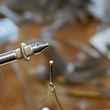

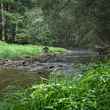
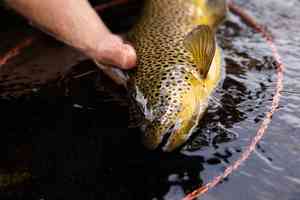

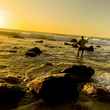
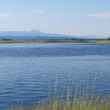
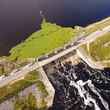

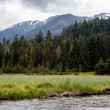
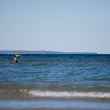



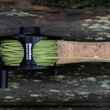
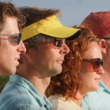



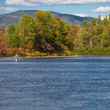
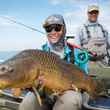
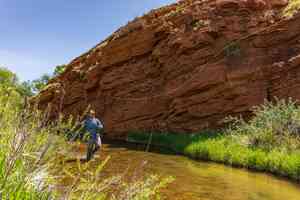
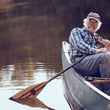

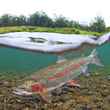
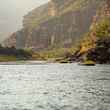
Comments
Mark van Roojen replied on Permalink
I always appreciate Ted Williams's conservation reporting. Good to see this here.
Kerry replied on Permalink
As a friend of Charlie's who misses him like all who knew him, I’m excited that the Little Book project continues. Kirk and Chris undoubtedly have great stuff to tell us. These three guys are some of the “good guys” in our sport, talented writers who care deeply. Congratulations on the new book, and thank you for all that you do.
Craig Phillips replied on Permalink
Loved the Black Book as much or more than the Red Book. The Red book has been reread every winter; now it has a partner. The tips really have helped me close the learning gap and has made me a better fisherman.
Pages